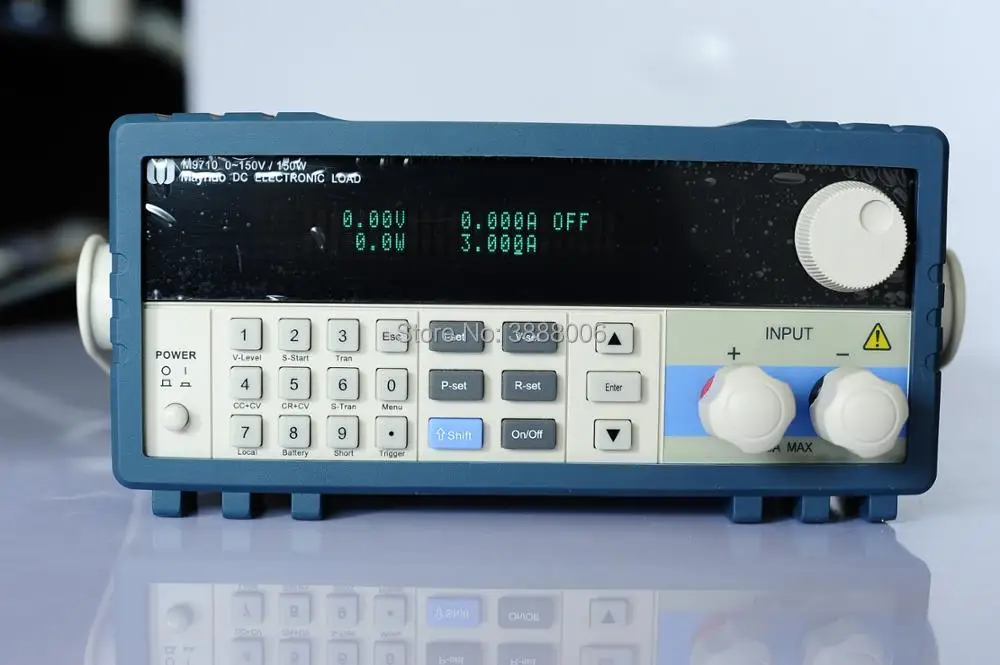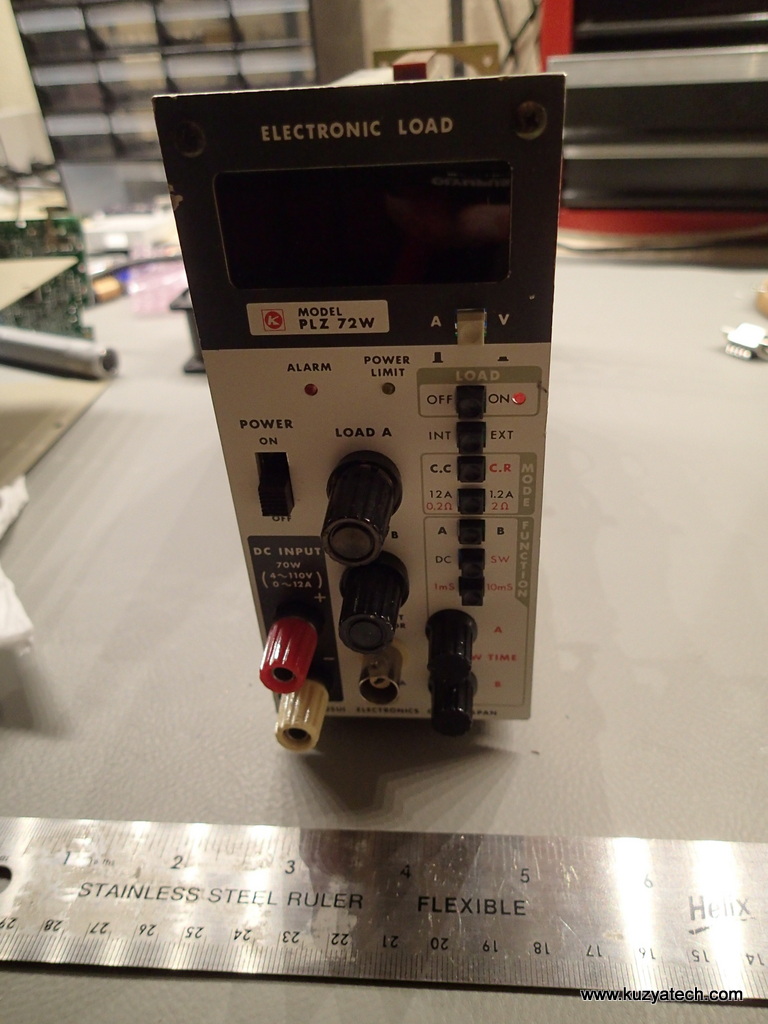

- #3710A ELECTRONIC LOAD HOW TO#
- #3710A ELECTRONIC LOAD SERIAL#
- #3710A ELECTRONIC LOAD DRIVER#
- #3710A ELECTRONIC LOAD SOFTWARE#
I have a primary connection and a secondary connection. I'd like feedback on this idea and also anyone that has either of the two pieces of equipment that is comfortable in Python and wants to use and help test my interfaces.Ĭustom splitter built and it works great. Good experimental data is always better than stuff you read on the internet. My understanding is that too long at constant voltage at low currents just plates the electrodes, reducing capacity faster. This will allow me to vary time at constant voltage "trickle charge" and see how that affects cell life.
#3710A ELECTRONIC LOAD HOW TO#
I'm hoping to gather a better understanding of how to tune our product, since we are shooting for a long term service life.
#3710A ELECTRONIC LOAD SOFTWARE#
The highest level software will be controlling the cycling and storing data in our database with each cycle. We will eventually be running this 24/7, with the cells in a fire proof structure. I'll also be adding a PC interface to the on battery thermistors and possibly an accurate thermocouples tied to aluminum holder plates.

If I don't have any interface issues, we will be purchasing another DP832 to be used exclusively for this. I'm not sure if I'll be flushing out a complete support at first, but I hope to eventually get there. I'm going to be working on the DP832 interface in Python next week.

Since we are using a non-standard chemistry, we want to do accelerated cycling life test. We can cycle a cell a few times to get good capacity information, or run a cycle until failure program. Toggling the relay will swap which pair of batteries are in charge or discharge mode. Two will discharge and rest after discharge. I'm hoping to use the GPIO to toggle a 4PDT relay to swap batteries between the Loads and Power Supply. Then I just have to cut off output when I reach my cutoff final current. I will just set max current on max charge current and voltage at final charge voltage. My charging plan is currently using my Rigol DP832. It would be good if they would had built an acknowledgement protocol, but we have what we have. The load really only responses to the 0x91 Read command. I'll look at that when my second 3710A arrives. It seems like the safest setup would be connecting only GND, RX, TX. I worry about hooking both powers together. They both have 3.3V, GND, TX, RX on their DB9 connection.
#3710A ELECTRONIC LOAD SERIAL#
I assume I can just Y the USB to TTL serial adapter to connect to both. Since the loads each have a device number, I plan on using the same TTL serial connection for both loads I will be controlling (I just ordered a second 3710A). I have to test the program set, start, and stop support against the actual load before I upload to Github. It supports all features published in the interface spec.
#3710A ELECTRONIC LOAD DRIVER#
This week, I wrote a complete remote driver for the 3710A in Python. I've been pretty happy with it, except for software. With some reading on here about various loads, I purchased a TekPower (rebranded Array) 3710A. There are many battery cycling devices, but most are made to manually be run and start around $3k and go well past $10k. It is an essential instrument for design, test and manufacture of many suitable products.While looking at options for cycle testing Lithium batteries, I've not found exactly what I need. The backlight LCD, numerical keypad and rotary knob make it much easier to use. It offers constant current mode, constant resistance mode and constant power mode. It provides a convenient way to test batteries and DC power supplies. Array 3700 series electronic load is a single input programmable DC electronic load.


 0 kommentar(er)
0 kommentar(er)
